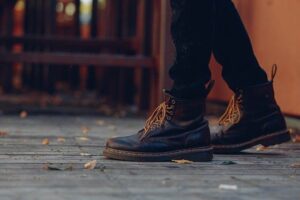The Benefits Of Cooking When Living With Dementia

Cooking and baking have been shown to be great activities for people in assisted living; it allows them to explore the senses, provides a creative outlet, helps to spark memories, and encourages conversation. Explore the benefits of cooking for those living with dementia:
1. It Engages the Senses
Cooking provides an excellent activity for sensory stimulation exploring touch, sight, smell, sound, and taste. For someone living with dementia, sensory activities provide platforms for reminiscence, socialization, and help to improve mood. Engaging the sense of smell as part of a cooking activity can be a great way to reduce agitation and aid with relaxation, as familiar scents incite feelings of comfort and evoke memories.
 Try asking your loved one what their favorite meal was as a child and re-create it together. Involving your loved one in cooking processes, such as kneading dough and using cooking utensils, are great ways to engage their sense of touch. Doing these can help to improve hand-eye coordination while providing light physical exercise.
Try asking your loved one what their favorite meal was as a child and re-create it together. Involving your loved one in cooking processes, such as kneading dough and using cooking utensils, are great ways to engage their sense of touch. Doing these can help to improve hand-eye coordination while providing light physical exercise.
2. Creates Reminiscence
Cooking is a familiar activity for many and taking part in activities in the kitchen can help trigger positive memories for someone living with dementia. Meals are often cooked within a family home shared with loved ones, therefore creating a familiar meal, which has a familiar smell or taste, can help stir those memories.
If your loved one used to bake, why not try making biscuits together. Select a simple recipe that involves kneading. Baking biscuits is known to provide a homely familiar smell which may also help spark memories and conversations of when your loved one used to bake. The smell of food cooking has proved to be a powerful reminiscence tool. Familiar scents can help to take someone back in time, triggering memories and eliciting feelings of positivity.
3. Provides Socialization
Living with dementia can sometimes cause someone to withdraw and become less forthcoming as they may be experiencing memory or communication difficulties. Taking part in familiar activities such as cooking or baking is a great way to increase social interaction by working together.
Socializing through activities can have a profound impact on someone’s mood. Simply taking part in something together or having conversations surrounding the activity can significantly reduce loneliness and help improve your loved one’s mood.
4. Increases Appetite
Many people living with dementia can experience a loss of appetite and therefore lose a connection with food. By introducing cooking as an activity, the enjoyment and social interaction can provide a useful tool for increasing appetite. Try to create food that looks or smells appealing; the aroma can help stimulate appetite.
5. Provides Relaxation

Cooking has many stress-relieving benefits and can help those living with dementia relax. Repetition in baking and activities such as kneading dough have been shown to be an effective way to reduce agitation and create a calming environment.
With a multitude of benefits, cooking and baking are brilliant ways to help those living with dementia reminisce and create connections with both people and food. Try introducing small cooking activities in a safe way with your loved one to explore the benefits.
Dementia Statistics
A study published in the January 2010 issue of the journal Alzheimer’s and Dementia, finds that symptoms of cognitive decline can be experienced some 20 years before an Alzheimer’s diagnosis. According to the long term study led by Dr. Barry Reisberg director of The Fisher Alzheimer’s Disease Education and Resources Program at NYU Langone Medical Center, healthy older adults with subjective memory loss are 4.5 times more likely to develop mild cognitive impairment and dementia.
In 2012, Alzheimer’s Disease was the third leading cause of death in San Diego County and an estimated 60,000 San Diegans are currently living with this disease or another form of dementia (per the San Diego Health & Human Services Department).


 No matter where you are, the last line of defense between you and accident or injury is your own body. Investing in the right clothing, footwear, and assistive gear (when necessary) can help you keep your body safe in the home and elsewhere. For seniors with aging bodies and health concerns, this is especially important. Wearing clothing that keeps the body comfortable and adequately warmed can help prevent illness like pneumonia, which can be devastating for seniors. Wearing properly-fitting shoes without heels can help prevent falls and keep the feet from developing bunions, hammertoes, and arthritis. Likewise, investing home-friendly, properly-measured walking aids can help prevent falls and other accidents in the home.
No matter where you are, the last line of defense between you and accident or injury is your own body. Investing in the right clothing, footwear, and assistive gear (when necessary) can help you keep your body safe in the home and elsewhere. For seniors with aging bodies and health concerns, this is especially important. Wearing clothing that keeps the body comfortable and adequately warmed can help prevent illness like pneumonia, which can be devastating for seniors. Wearing properly-fitting shoes without heels can help prevent falls and keep the feet from developing bunions, hammertoes, and arthritis. Likewise, investing home-friendly, properly-measured walking aids can help prevent falls and other accidents in the home.